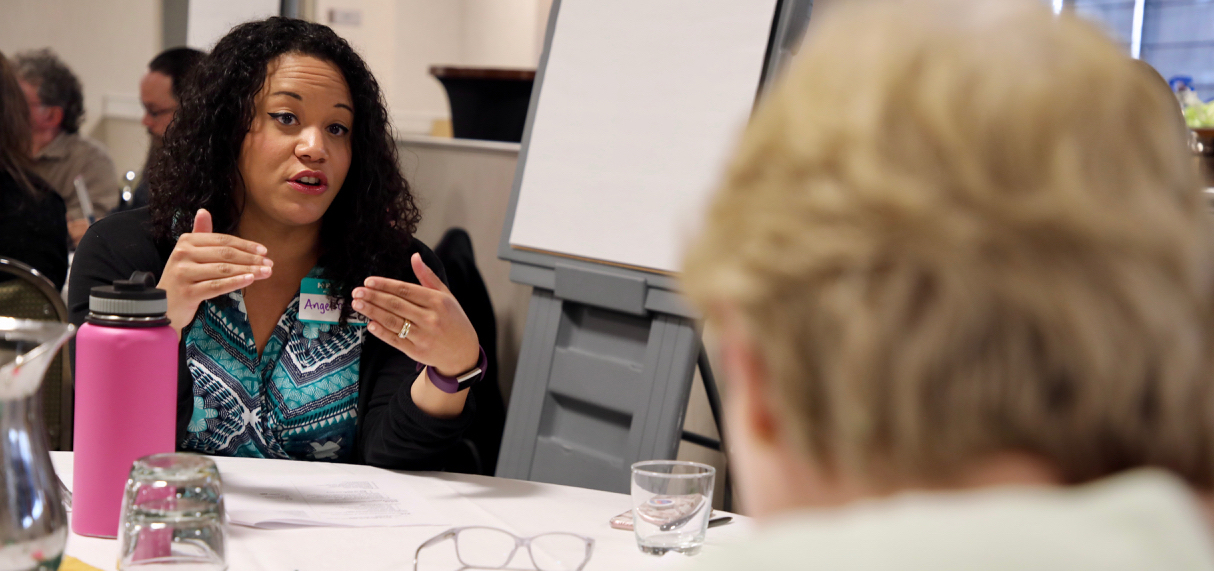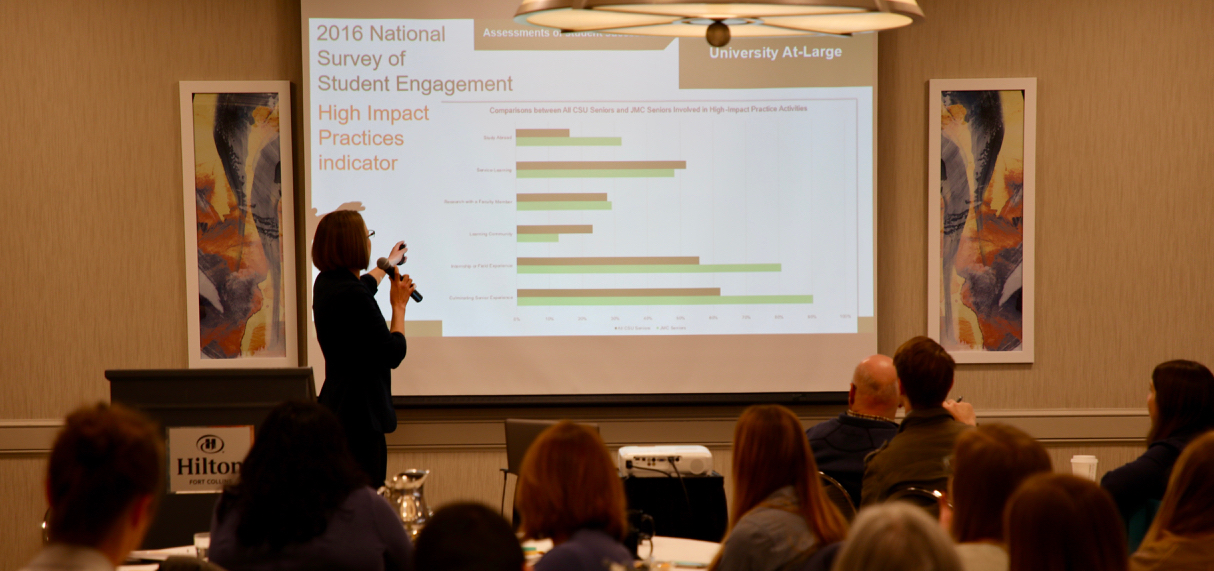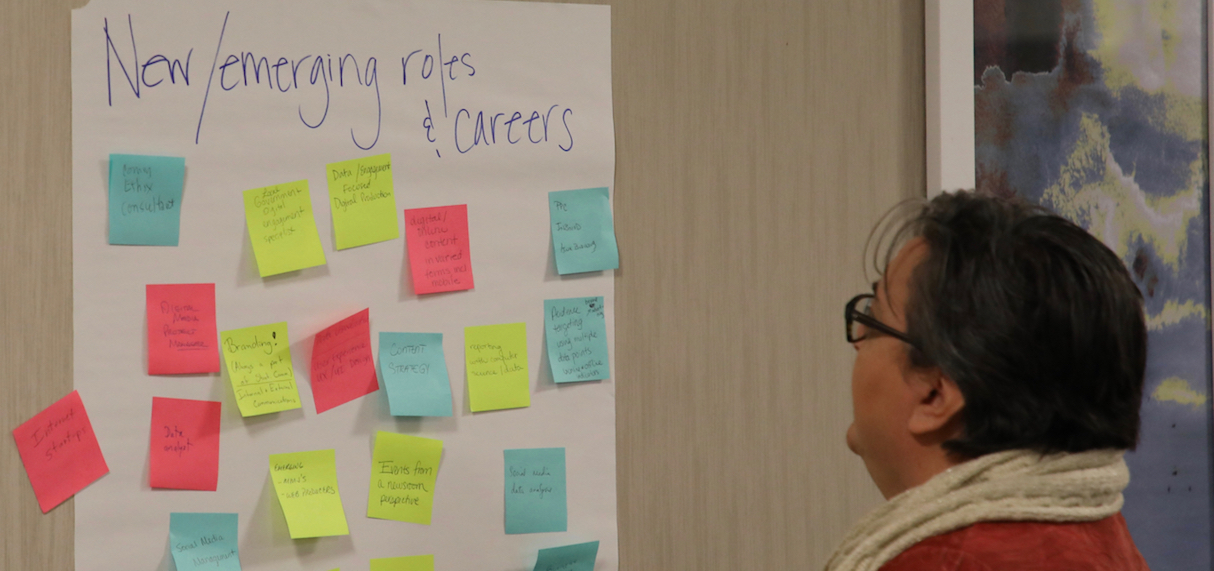JMC Alumna Angelica (Riley) Wedell, ’09, marketing and business development manager at National Research Center, Inc., participated in sessions targeting marketing and public relations curriculum. Photos by Greg Luft
In an effort to keep up with the constantly changing nature of its discipline, CSU’s Department of Journalism and Media Communication held its first “undergraduate curriculum stakeholder’s summit” this spring to engage faculty with current and former students as well as professionals in the industry.
The summit, held April 20 at the Fort Collins Hilton, provided about 80 of the department’s stakeholders with the chance to share how the JMC curriculum could be improved to make sure that its graduates are well-prepared for their first jobs after college. Those in attendance included current and former members of Rocky Mountain Student Media staff, alumni, JMC faculty and staff, professionals from a variety of communication fields and current JMC students.
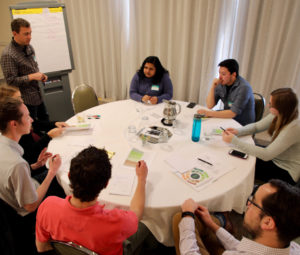
The daylong retreat was facilitated by Jennifer Sizemore, vice president and editor-in-chief of Starbucks in Seattle, who led the site visit team for the department’s most recent accreditation.
‘Distinctive approach’
“Media and communications change very quickly, and we wanted everyone’s input on how to continue improving over time,” said Greg Luft, head of the department. “This is a pretty distinctive approach to curriculum development. We did this about eight years ago, but on a much smaller scale, and it was very helpful as a first step in what was about a five-year process when we developed 26 new courses. Now it’s time to go again.”
Katie Abrams, a JMC associate professor and chair of the department’s Undergraduate Committee, began the day by outlining the various ways that the department’s undergraduate program is evaluated, from the unit and college level to the university and accrediting agency level. She noted that in the 2016 National Survey of Student Engagement, JMC seniors rated their experience in the department higher than the average CSU senior in 10 out of 14 categories. The few areas in which JMC seniors’ ratings were below the campus average included quantitative reasoning, collaborative learning with peers and high-impact practices involving service learning and the learning community.
Abrams presents the results of the National Survey on Student Engagement. Photos by Greg Luft
Abrams outlined those and other areas for targeted improvement, like boosting undergraduate research with faculty, providing students with prompt and detailed feedback, and bolstering student learning strategies. She also presented results of other assessments from internships, capstone and reviewer surveys, the Undergraduate Committee, alumni surveys and the accreditation process. In one survey, 77 percent of alumni respondents who graduated between 2011 and 2015 reported that their degree of preparation for their first communication job was “excellent” or “good.”
Breakout groups
Using hundreds of Post-It notes, the participants shared their ideas on things like new skills needed in the field, as well as old skills that will always be needed. Then they were divided into breakout groups to discuss each sector of journalism and media communication, from public relations and marketing to news content and production. For each sector, the groups were charged with identifying what they think is and isn’t working in the curriculum, and where ethics, law and digital/social media should be incorporated. They took turns presenting what’s missing, what the department should stop doing, and one big idea for JMC to consider.
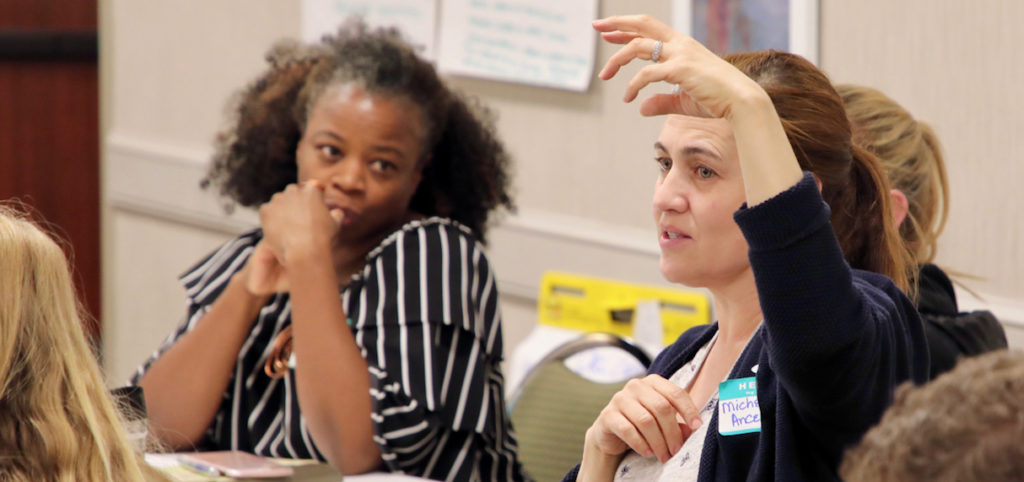
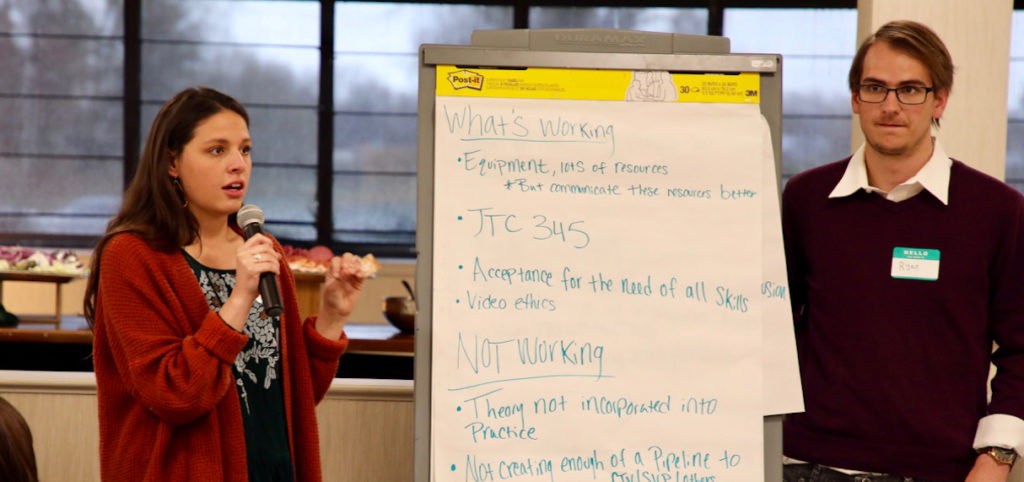
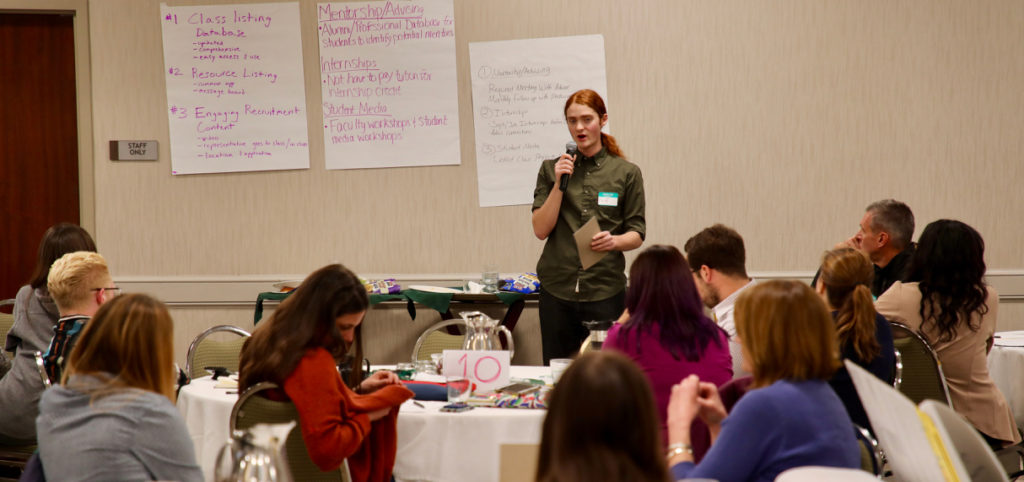
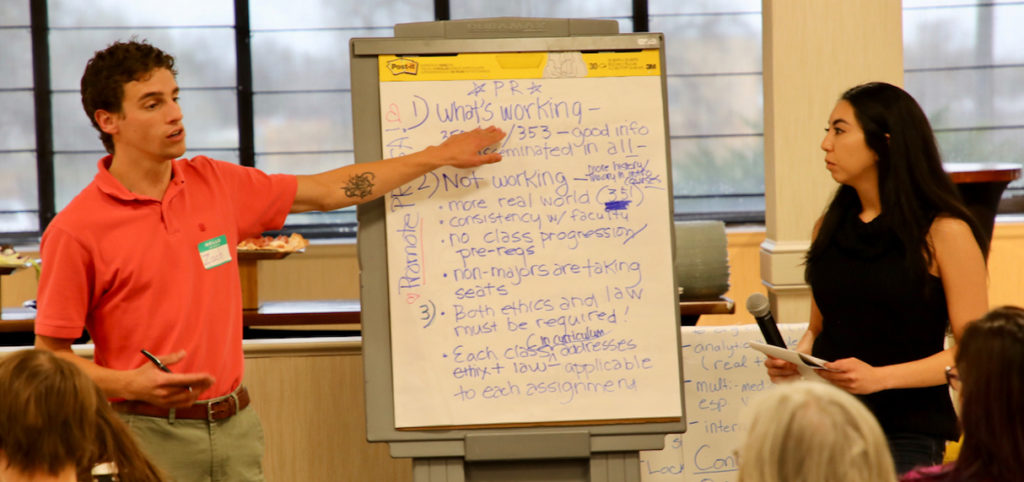
A variety of new and long-considered ideas emerged, including:
- Improve the department’s facilities in the Clark Building
- Coursework in both media law and media ethics should be required and emphasized more
- Add more structured mentorship programs, including those in student media
- Provide more education on cultural competency and how certain language can be insensitive
- Focus more on fundamentals like copyediting
- Create more learning opportunities in audio production
- Don’t charge tuition for unpaid internships
- Have more class assignments linked to student media
- Consider offering certificates in areas like web development skills
Follow-up in the fall
After the participants used their Post-It notes to vote for their favorite ideas written on sheets hanging from the walls, Luft told the group that the top recommendations will be discussed by the Undergraduate Committee and at the JMC’s faculty retreat in the fall.
Since the summit, as part of the University’s Program Review process, in June the Department successfully applied for university funds to launch a comprehensive curriculum research effort, and an emerging trends workshop series that will run in the next academic year.
Sizemore thanked and lauded the group for participating in the forward-thinking event.
“This really recognizes the shifting, chaotic state of this industry,” she said.
The Department of Journalism and Media Communication is in CSU’s College of Liberal Arts.
